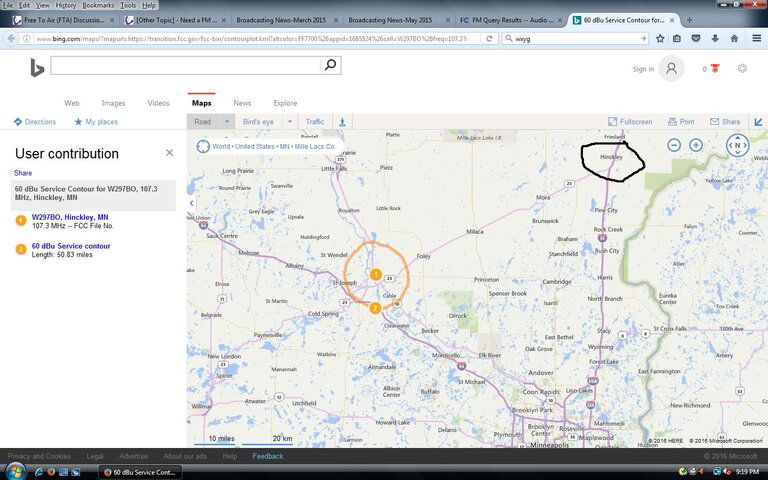The possibility of "hopping" a translator for AM's without all the B.S. and paperwork currently in place will be very nice, but it WILL drive UP the cost of all translators most likely.
We had ours in the "making" for us and the deal ready even before they were officially "legal" for AM's, and at that time would have required an STA (special temporary authority.) I think it's near 6 years we've had it now! Even moving ours about 3 physical miles took two "hops" to do it the old way. One "hop" was to an intermediate frequency which was (and may still) be required because you can't just file for a frequency and get it, you have to "hop" to certain intermediate frequencies to GET to the final one. (This may also change in the ruling, I don't know) We had to I-F hop from 103.7 to 93.1 before we were allowed to settle in on 92.7. The second "hop" to 92.7 was physical AND frequency, the first was just a frequency change at the original site. Technically, a "build" and "operate" was required on EACH hop, and this is what the FCC is trying to streamline.....so we don't have to buy, build, run, hop, ...build...run...hop....repeatedly to get to our final sites for AM into FM translators.
Properly bought and used, FM can help where REALLY needed for an underserved signal situation. Translator owners wanting to make a fast buck on translators will treat this like a "real estate" transaction, and I predict more problems will develop as stations whose programming is NOT already supported well by advertisers go in to debt they can't afford thinking FM will "save" them, when really it's PROGRAMMING and SOUND that they need before anything else.
....Without the "ears" listening to an AM, and incoming dollars, all the FM signal in the world won't help a poorly programmed AM station to survive.
I applaud the effort by Mr. Pai and the FCC, but I fear how some operators will misuse and abuse the system. My bet is we find a wave of AM's WITH TRANSLATORS for sale in a few years by the operators who didn't realize that they needed internal changes more than they needed the FM.
The other interesting thing to note is that there's been TONS of available translators in some markets that wouldn't sell at their listed prices BEFORE this "help for AM" issue arose. It'll be interesting to see if the sellers really WANT to sell them to get them into new owner's hands, or if they try to scalp AM's at a higher price than at what they were originally listed publicly.
Signed,
"Watching with interest as always...."




